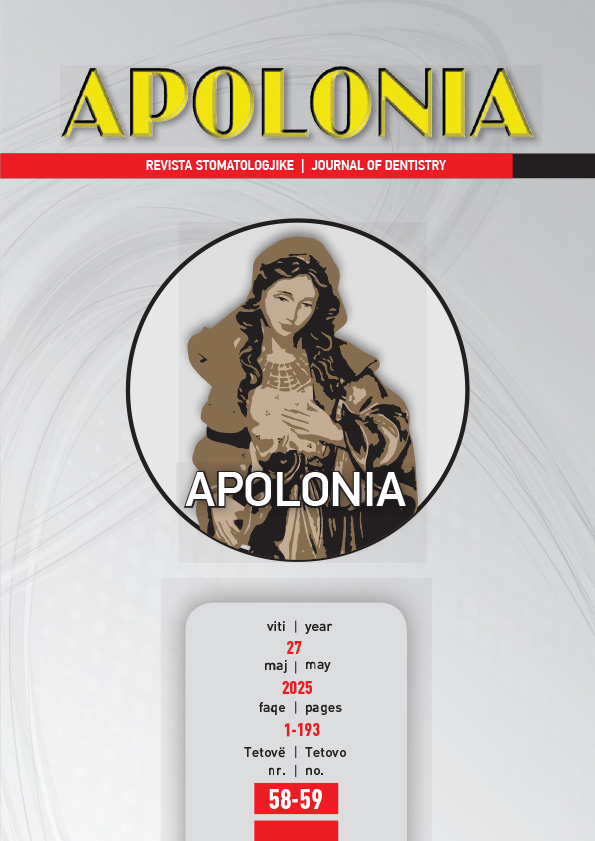APOLONIA 58-59 (2025)
Comparison of the impact of irrigation protocols on apical microleakage in teeth obturated with different techniques: an in vitro study
Authors: Emire Çitaku, Ekrem Çitaku, Vasilka Renxhova, Ana Minovska
DOI: 10.62636/YPMV5723
Keywords: microleakage, root canals, irrigation, ultrasonic activation, obturation.
ABSTRACT
This in vitro study analyzes the impact of various irrigation protocols on microleakage in teeth obturated with different techniques. The research included 84 single-rooted teeth, divided into three groups based on the irrigation protocol: (1) 2.5% NaOCl and 17% EDTA activated with ultrasound, (2) 2.5% NaOCl and 17% EDTA without activation, and (3) physiological saline solution as the control group. The teeth were further subdivided into subgroups according to the obturation technique: the vertical condensation technique with heated gutta-percha and the single-cone technique. After irrigation and obturation, microleakage was assessed using the dye penetration method and evaluated under an optical microscope. The results showed that ultrasonic activation significantly reduced microleakage compared to traditional irrigation methods. The best outcomes were observed in the group where 2.5% NaOCl and 17% EDTA with ultrasonic activation were used, combined with the vertical condensation technique of heated gutta-percha for obturation. Statistical analysis confirmed significant differences between the groups, highlighting that ultrasonic activation during the irrigation process contributes to better root canal obturation. This study underscores the importance of proper irrigation protocols and their application in clinical practice to enhance the long-term success of endodontic therapy.



